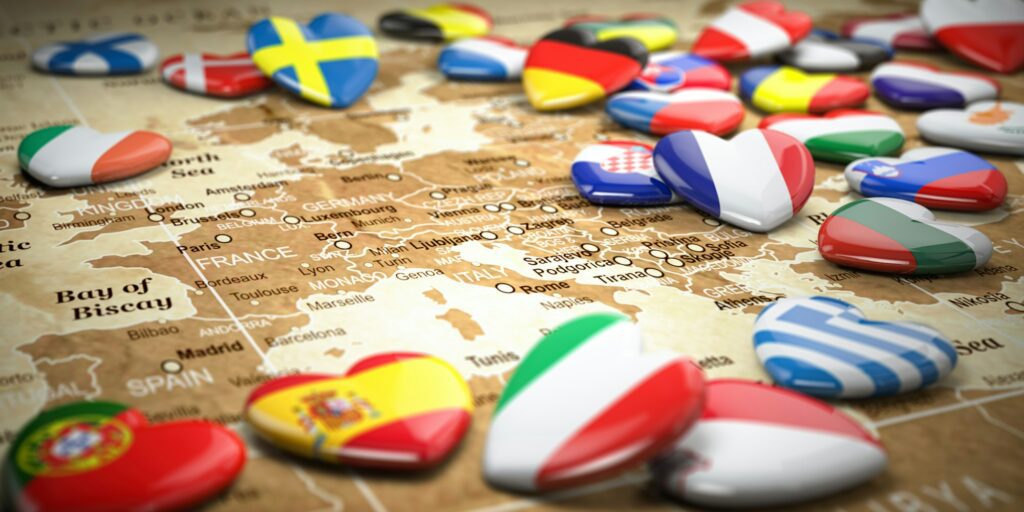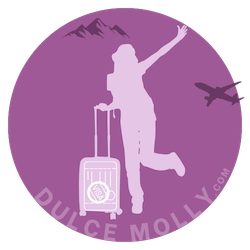Introduction
Embarking on a solo journey, especially as a solo female voyager, is an exhilarating experience that marries independence with the allure of discovery. Europe, with its tapestry of cultures, languages, and landscapes, stands out as a premier destination for solo female traveler seeking adventures that are both enriching and safe. Yet, the importance of gathering information and data about any destination cannot be overstated, as it significantly enhances the travel experience while ensuring safety and preparedness.
Europe for the solo female traveler offers an array of experiences that cater to every interest and desire. From the serene canals of Venice to the historic streets of Prague, the continent’s diversity allows for a deeply personal and fulfilling journey. However, navigating this vast landscape requires a well-informed traveler. Understanding the cultural nuances, legal norms, and safety standards of each destination within Europe is crucial. This knowledge empowers solo female voyager to immerse themselves fully in their surroundings while maintaining a level of caution and respect for local customs and regulations.
Researching and gathering data about potential destinations serves several critical purposes. Firstly, it helps in planning a trip that aligns with personal interests and comfort levels. Whether it’s exploring the art galleries of Paris, the beaches of Greece, or the northern lights in Scandinavia, knowledge about these places enhances anticipation and excitement. Additionally, being informed about the logistical aspects of travel, such as public transportation systems, accommodation options, and local cuisine, can significantly enhance the travel experience, making it smoother and more enjoyable.
Safety is, without question, a paramount concern for the solo female voyager. Europe is generally considered safe for solo travelers, but risks exist everywhere. By researching and understanding the safety profile of each destination, travelers can take preventative measures, such as avoiding certain areas at night or knowing the local emergency numbers. Awareness of cultural attitudes towards women can also inform a traveler’s conduct and attire in different European countries, ensuring respectful interactions and reducing potential risks.
Europe, a continent that embodies the dreams of many solo female voyagers, offers an unparalleled adventure across its diverse tapestry of cultures, languages, and breathtaking landscapes. This continent, where ancient ruins whisper tales of yore and modern cities throb with contemporary life’s pulse, is a sanctuary for solo travelers seeking a blend of historical charm and modern vibrancy. From the romantic boulevards of Paris to Berlin’s cutting-edge art, the serene fjords of Norway, and Greece’s radiant beaches, Europe is an exquisite mix of the timeless and the avant-garde. Embark on a journey of self-discovery with our guide, ‘Introducing Europe for the Solo Female Voyager,’ featuring 25 essential questions and answers designed to unveil the continent’s myriad wonders, ensuring your solo adventure is both empowering and unforgettable.

Questions about Europe
Europe for the Solo Female Voyager in Q&A format?
- What does the name Europe means ?
- What is the total population of Europe, and how does it rank globally?
- How many countries are there in Europe, and which is the largest by area?
- What is the total GDP of Europe, and which European country has the highest GDP?
- What are the most spoken languages in Europe, and how many languages are indigenous to the continent?
- What percentage of the world’s UNESCO World Heritage Sites are located in Europe?
- How does the life expectancy in Europe compare to other continents?
- What is the highest point in Europe, and where is it located?
- What are the major rivers in Europe, and which is the longest?
- How many time zones does Europe span?
- What is the European Union (EU), and how many member states does it currently have?
- How does the education system in Europe compare with that of North America in terms of higher education institutions and international student enrollment?
- What percentage of the world’s tourists visit Europe annually?
- What are the busiest airports in Europe, and which city has the highest air traffic?
- How does internet penetration in Europe compare to other continents?
- What are the leading causes of mortality in Europe, and how do they compare to global averages?
- How does the average annual income in Europe compare to that in North America?
- What is the Schengen Area, and how many countries are part of it?
- How does Europe’s renewable energy consumption compare with its total energy consumption?
- What is the unemployment rate in Europe, and how does it vary among different European countries?
- How does public healthcare in Europe compare with that in the United States in terms of access and quality?
- What percentage of Europeans live in urban areas, and which European city is the most densely populated?
- How many international students study in Europe, and which European countries are the most popular destinations?
- What are the major industries driving Europe’s economy?
- How does the carbon footprint of the average European compare to that of individuals on other continents?
- How does the carbon footprint of the average European compare to that of individuals on other continents?
- What is the cultural diversity index in Europe, and how does migration impact this diversity?
For more resources about the best app for your travel to Europe

What does the name Europe mean?
Europe for Solo Female Voyager in DATA
| Detail | Information |
| Name | Europe |
| Surface Area | Approx. 10.18 million km² |
| Population | Approx. 748 million (2020) |
| Number of countries in Europe | There are 50 countries in Europe, but only 44 of them have their capital city on the European continent. |
| Number of EU Countries | Countries in the Schengen Area |
| Most touristic country in Europe, top 10 | Austria, Belgium, Czech Republic, Denmark, Estonia, Finland, France, Germany, Greece, Hungary, Iceland, Italy, Latvia, Liechtenstein, Lithuania, Luxembourg, Malta, Netherlands, Norway, Poland, Portugal, Slovakia, Slovenia, Spain, Sweden, and Switzerland |
| Countries with Borders with the EU | Non-EU countries that border the EU include Norway, Switzerland, Iceland, Liechtenstein (all part of Schengen but not the EU), and countries like Ukraine, Belarus, Moldova, Russia, Turkey, Albania, North Macedonia, Serbia, Bosnia and Herzegovina, Montenegro, and Kosovo |
| Largest Country by Area | Russia (Note: Russia is partially in Europe and Asia, but its largest portion of land area is in Asia) |
| Smallest Country | Vatican City |
| Highest Point | Mount Elbrus, Russia (5,642 meters above sea level) |
| Longest River | Volga River, Russia (3,692 km) |
| Largest Lake | Lake Ladoga, Russia |
| Oldest University | University of Bologna, Italy (Established in 1088) |
| Most Populous City | Istanbul, Turkey (Note: Part of Istanbul is in Europe and part in Asia) |
| Richest Country (GDP per capita) | Luxembourg |
| Poorest Country (GDP per capita) | Moldova |
| Most Visited Country | France |
| Currency | Euro (used by 19 of the 27 EU countries and some non-EU countries), various other currencies |
| Official Languages | There are 24 official languages in the EU alone and over 200 languages are indigenous to Europe. English, German, French, Spanish, and Italian are widely spoken. |
| DrivingOrientation | Right-hand side, except for the United Kingdom, Ireland, Cyprus, and Malta, where left-hand driving is the norm. |
| Rail Network | Europe has one of the most extensive and used rail networks in the world, including high-speed trains like the TGV in France and the ICE in Germany. |
| Schengen Visa | Allows for short stays (up to 90 days within 180 days) for tourism or business across the Schengen Area without border controls. |
| Most touristic country in Europe, top 10 | France – Spain – Italy – Turkey – Germany – United Kingdom – Greece – Portugal – Netherlands – Austria |
Definition :
GDP, or Gross Domestic Product, is like the total scorecard of a country’s economic health. It measures the value of all goods and services produced within a country over a specific period, usually a year. Think of it as a way to gauge how well the economy is doing, similar to checking the score in a sports game to see who’s winning.
For you, the adventurous female tourist, GDP can be a helpful indicator in a few ways:
- Stability and Services: A higher GDP often means a country has more resources to spend on infrastructure, safety, and public services. This can translate to better roads, more reliable public transportation, and enhanced safety measures—all important for solo travelers.
- Quality of Life: Countries with higher GDPs tend to have higher standards of living. For you, this might mean access to better healthcare facilities in case of emergencies, higher-quality accommodation options, and a wide variety of entertainment and dining choices.
- Cultural Experiences: A flourishing economy often supports vibrant arts and culture scenes. This means more festivals, museums, art galleries, and theatres for you to explore, enriching your travel experience.
- Cost of Travel: GDP can also give you a hint about the cost of travel in a country. Higher GDP countries might be more expensive, reflecting in the prices of hotels, meals, and activities. However, they might also offer more budget options due to the diversity of services available.
In short, while GDP might seem like a dry economic term, it holds valuable insights into what you can expect from your travel destinations. It helps you prepare, budget, and choose destinations that align with your travel style, ensuring your solo adventures are both exciting and smooth sailing.
All the Answers for Solo Female Voyager
- The name “Europe” has a somewhat uncertain and mythological origin, with several theories about how the continent got its name. One popular theory ties the name to the Greek myth of Europa, a Phoenician princess whom Zeus, the king of the gods, abducted after disguising himself as a beautiful white bull. Zeus took Europa to Crete, and their union is said to have produced King Minos. In this context, “Europe” might stand for broad or wide-gazing, reflecting the mythological story’s themes of journey and discovery, as derived from the ancient Greek words “eurys” (broad or wide) and “ops” (face or eyes).
- Another theory suggests that the name comes from ancient Greek terms like “ereb,” referring to the sunset, positioning Europe as the land in the direction of the setting sun, west of Asia. This interpretation aligns with the geographical perspective of the ancient Greeks, for whom the world was divided into three major parts: Europe, Asia, and Libya (Africa), with Europe lying to the west of Asia.
- What’s the total population of Europe, and how does it rank globally? Europe is home to about 748 million people. That’s like if you took everyone in the US and multiplied them by a little over two! Europe stands as the third most populous continent after Asia and Africa, making it a melting pot of cultures and languages.
- How many countries are there in Europe, and which is the largest by area? Europe consists of around 44 countries (the exact number can vary based on how you define Europe’s borders). The largest country by area is Russia, which stretches across Europe and Asia; however, if we’re talking purely in European terms, France takes the crown. It’s like the Texas of Europe but with more croissants and castles.
- What is the total GDP of Europe, and which European country has the highest GDP? Europe’s GDP is a whopping $22 trillion, making it a massive player on the global stage. Germany leads the pack with the highest GDP in Europe, akin to how California is the economic powerhouse of the US.
- What are the most spoken languages in Europe, and how many languages are indigenous to the continent? Europe is a Babel of languages, with over 200 indigenous languages. The most spoken ones are Russian, German, French, English, and Italian. It’s like visiting multiple mini-worlds within one continent, each with its own unique linguistic charm.
- What percentage of the world’s UNESCO World Heritage Sites are located in Europe? About 45% of UNESCO World Heritage Sites are nestled in Europe. That’s almost half of the world’s treasures! From the Acropolis in Athens to the Tower of London, Europe is like an open-air museum waiting to be explored.
- How does the life expectancy in Europe compare to other continents? Europe boasts one of the highest life expectancies in the world, averaging around 78 years. It’s like the continent itself is telling you, “Take your time exploring; we’re all about the long, fulfilling journey here.”
- What is the highest point in Europe, and where is it located? Mount Elbrus in Russia is Europe’s highest peak, reaching 5,642 meters (about 18,510 feet) into the sky. Imagine standing on top and feeling like you’re on the rooftop of Europe, with the entire continent spread out beneath you!
- What are the major rivers in Europe, and which is the longest? The Volga River in Russia is the longest in Europe, stretching about 3,692 kilometres (2,294 miles). It’s like the Mississippi River of Europe, winding through the continent and telling its own story of history and culture.
- How many time zones does Europe span? Europe stretches across three main time zones: Western European Time (WET), Central European Time (CET), and Eastern European Time (EET). It’s like jetting from New York to California, but instead of crossing states, you’re hopping between countries and cultures.
- What is the European Union (EU), and how many member states does it currently have? The EU is like a big club where 27 European countries have come together to promote peace, stability, and economic cooperation. Think of it as a team, where each member plays a part in making Europe a better place to live, work, and explore.
- How does the education system in Europe compare with that of North America in terms of higher education institutions and international student enrollment? Europe is packed with historic and prestigious universities, and it’s more common there for students to attend university in a different country from where they grew up. With programs often taught in English and an emphasis on international students, it’s like Europe’s rolling out the red carpet for students from around the globe, including those from North America!
- What percentage of the world’s tourists visit Europe annually? Nearly 50% of international tourists choose Europe as their destination. It’s like half the world’s travelers have said, “Yep, Europe is where the adventure’s at!” Whether you’re marvelling at the Northern Lights or basking on a Mediterranean beach, Europe is a magnet for those seeking beauty and exploration.
- What are the busiest airports in Europe, and which city has the highest air traffic? Europe’s skies are pretty busy, but London Heathrow Airport takes the crown for the busiest in terms of international traffic. It’s like the Grand Central Station of the skies, connecting you to countless adventures across Europe and beyond. Imagine starting your solo journey here, amidst travelers from all corners of the globe!
- How does internet penetration in Europe compare to other continents? Europe is pretty well-connected, with one of the highest internet penetration rates among the continents. It’s as if almost every nook and cranny, from bustling cities to serene villages, is wired up. For you, this means staying in touch, sharing your travels, or finding your way around is just a tap away on your smartphone.
- What are the leading causes of mortality in Europe, and how do they compare to global averages? Like many places, Europe’s top health challenges include heart disease, cancer, and respiratory diseases. Compared to global averages, Europe has a robust healthcare system to combat these issues. For a traveler, this highlights the importance of staying healthy and knowing that quality care is available if you need it.
- How does the average annual income in Europe compare to that in North America? Incomes in Europe can vary widely, just like the landscapes. Western European countries tend to have higher average incomes, somewhat comparable to the US, whereas Eastern Europe has lower averages. For a solo traveler, this means your dollar might stretch further in some countries, letting you explore more for less!
- What is the Schengen Area, and how many countries are part of it? The Schengen Area is like a VIP club for 26 European countries that have abolished passports and all types of border control at their mutual borders. It’s a traveler’s dream, allowing you to roam freely from the Eiffel Tower to the canals of Venice without stopping for border checks.
- How does Europe’s renewable energy consumption compare with its total energy consumption? Europe is making strides in going green, with a significant chunk of its energy coming from renewable sources like wind, solar, and hydro. It’s as if Europe is trying to match its beautiful landscapes with equally clean and green energy. For you, this means traveling in a region that values sustainability and the environment.
- What is the unemployment rate in Europe, and how does it vary among different European countries? Unemployment rates in Europe are a mixed bag, with some countries enjoying low rates and others facing challenges. It’s a reminder that Europe is a diverse continent, not just in culture but also in economic conditions. For a traveler, this diversity can manifest in the vibrancy of local economies, markets, and the spirit of entrepreneurship.
- How does public healthcare in Europe compare with that in the United States in terms of access and quality? Europe is known for its strong public healthcare systems, offering high-quality medical services to residents and sometimes even visitors. Unlike the US, where healthcare can be quite expensive and insurance-based, many European countries provide healthcare at lower costs or even free. It’s reassuring to know that, as a solo traveler, you’re in a region that takes healthcare seriously.
- What percentage of Europeans live in urban areas, and which European city is the most densely populated? About 75% of Europeans call urban areas home, loving the hustle and bustle of city life. Monaco might just win the title for the most densely packed, feeling more like a lively party where everyone’s invited. As you explore, you’ll find that Europe’s cities are where history meets modernity in an exciting dance.
- How many international students study in Europe, and which European countries are the most popular destinations? Europe is a hot spot for international students, with millions choosing to study here. Countries like the UK, France, and Germany are top picks, akin to Ivy League popularity, offering world-renowned universities and a multicultural environment. Even if you’re not studying, these cities offer a youthful, vibrant atmosphere that’s perfect for solo travelers seeking to learn and connect.
- What are the major industries driving Europe’s economy? From the sleek cars of Germany to the fashion runways of Italy and the tech startups of Estonia, Europe’s economy is driven by diverse industries. It’s like a giant mall with something for everyone: cars, clothes, gadgets, and even chocolates. As a traveler, this means experiencing the best of what each country does best.
- How does the carbon footprint of the average European compare to that of individuals on other continents? Europeans generally have a smaller carbon footprint than some of their counterparts on other continents, partly thanks to strong environmental policies and a focus on renewable energy. It’s as if Europe is trying to tread lightly on the earth, making it a great place for eco-conscious travelers to explore.
- What is the cultural diversity index in Europe, and how does migration impact this diversity? Europe’s cultural diversity index is like a kaleidoscope, constantly evolving with waves of migration adding new patterns and colors. This diversity is the spice of life here, offering a rich blend of traditions, languages, and cuisines. For a solo traveler, it means a journey filled with discoveries of the world in one continent.
Links for Solo Female Voyager planning a trip to Europe
For travelers planning a trip to Europe, there are several highly useful websites and apps to ensure a smooth and enriching experience. Here’s a roundup of some of the best resources:
- Europe for Visitors (europeforvisitors.com): Recognized by Forbes and the Washington Post, this editorial site offers unbiased information on European travel and cruising. It features over 6,000 pages of travel-planning advice, including detailed guides on Venice and Paris transportation【9†source】.
- DB Navigator (bahn.com): This app by Germany’s national train service, Deutsche Bahn, offers real-time schedules for trains all over Europe, allowing you to book tickets and check in for trips. It’s particularly useful for those planning to travel by train across the continent【7†source】.
- Trainline (thetrainline.com): Beyond trains, Trainline allows you to book buses in Europe, offering advance booking discounts and the ability to tailor your journey by selecting specific route options【7†source】.
- Citymapper (citymapper.com): Available in nearly 20 cities in Europe, Citymapper provides comprehensive public transit maps, real-time schedules, and updates on buses, subways, and trams. It’s invaluable for urban navigation【7†source】.
- GetYourGuide (getyourguide.com): Ideal for booking tours and classes, GetYourGuide offers thousands of options with real traveler reviews. It’s perfect for those looking to dive deep into European food, culture, and history through local experiences【8†source】.
- Viator (viator.com): Backed by TripAdvisor, Viator offers a vast selection of quality tours across Europe. The app is particularly useful on iPads for researching and booking tours, including those for fans of British TV and movies, as well as Potterheads interested in exploring Harry Potter movie sets【8†source】.
- Airbnb Experiences (airbnb.com): Airbnb is not just for finding places to stay; it also offers “Experiences” that allow travelers to immerse themselves in local culture, guided by locals. From architecture tours to discovering funky neighborhoods, it’s a great way to skip the tourist traps【8†source】.
- Expedia (expedia.com): As a one-stop shop for flights, hotels, and tours, Expedia simplifies planning by offering an extensive list of activities and experiences, including dining, food tours, and more【8†source】.
- Eurail (eurail.com): For those exploring Europe by train, the Eurail app is essential, providing offline access to train schedules, ticket booking, and other crucial information【8†source】.
- Skiplagged (skiplagged.com): This app reveals hidden city flights, potentially offering savvy travelers more economical flying options within Europe【8†source】.
These resources can vastly improve your travel experience in Europe, from planning stages to actual exploration, ensuring you make the most out of your journey.
Conclusion
“As we wrap up our exploration with ‘Introducing Europe for the Solo Female Voyager,’ each question and answer has peeled back layers of this magnificent continent, revealing the essence of what makes Europe a dream destination for solo female travelers. From safety tips and cultural etiquette to uncovering hidden gems and navigating public transport, we’ve journeyed through the practical to the profound, ensuring you’re well-equipped for your voyage. Europe’s allure lies not just in its scenic landscapes and historical marvels but in the growth and discoveries that await you. Armed with knowledge and inspired by the promise of adventure, you’re now ready to chart your course through Europe’s heart. May your solo journey be as enriching and transformative as the destinations you’ll explore. Remember, the path less traveled often leads to the most memorable stories. Happy travels!”
I hope these friendly insights help fuel your excitement and preparation for your European adventure! Remember, each country has its own unique charm and challenges, making Europe a fascinating continent to explore solo. Happy travels!



